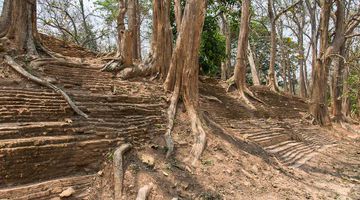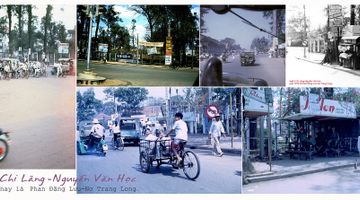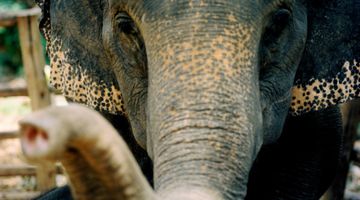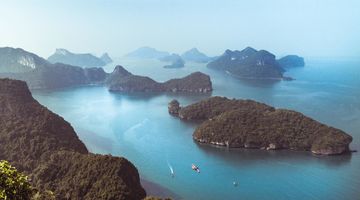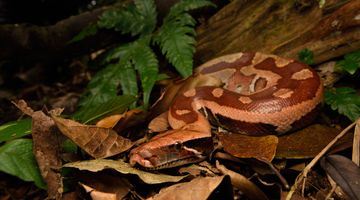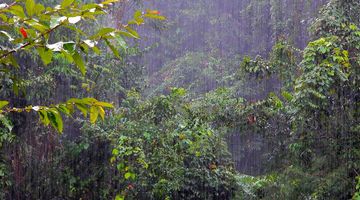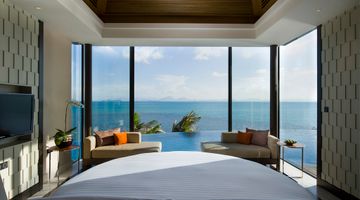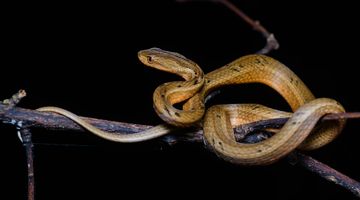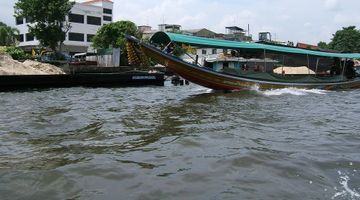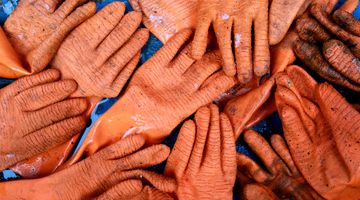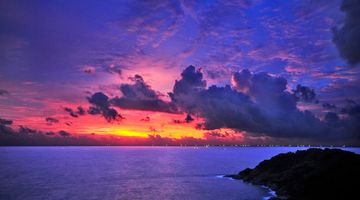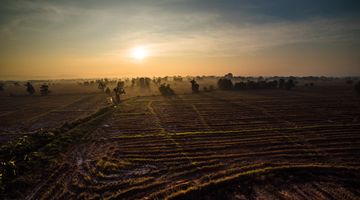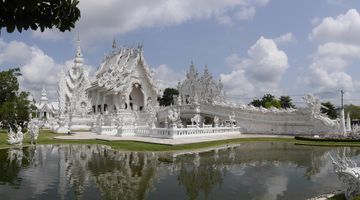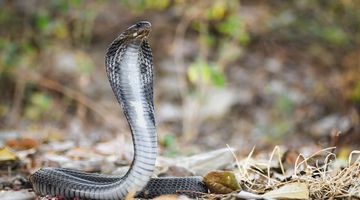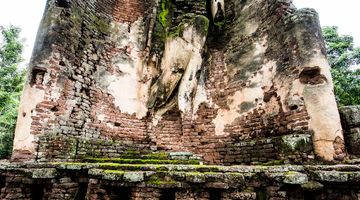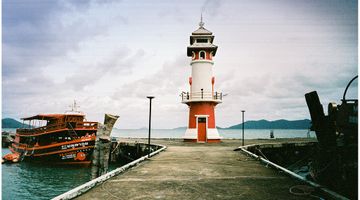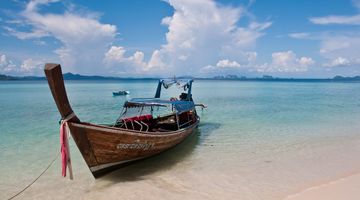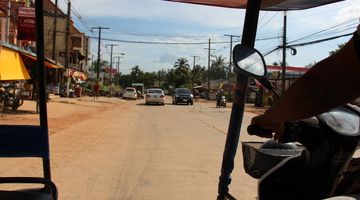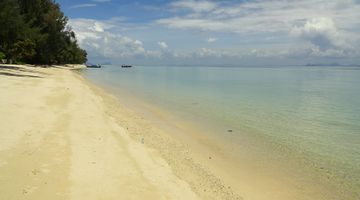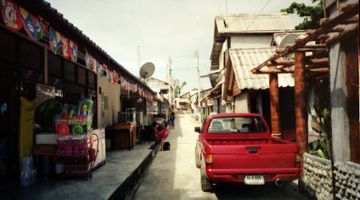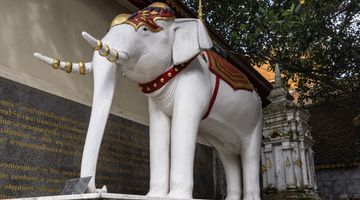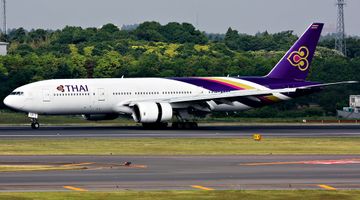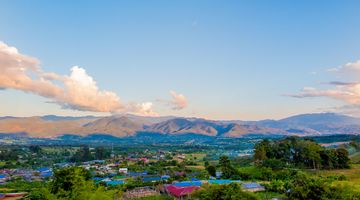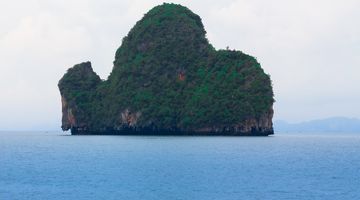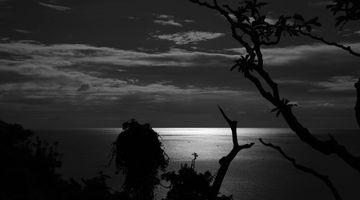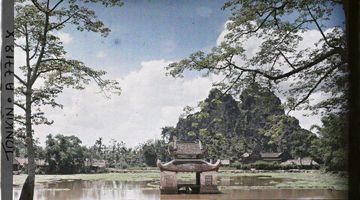Kui Buri National Park Travel Guide
In a nutshell
Covering the area of 995 sq. km, Kui Buri is one of the largest national parks in the country.
Why go to Kui Buri
Established in 1999, the park is located in the western part of Prachuap Khiri Khan province, in the mountainous region bordering Myanmar.
Although the wildlife population in Kui Buri cannot compete with what the nearby Kaeng Krachan national park has on offer; and you probably find that the natural beauty of the park is nowhere near to the amazing sceneries of the southern Khao Sok national park. Yet Kui Buri attracts its fair share of visitors, too, both foreigners and Thais, because it is much easier to spot wild elephants in their natural habitat here.
Any time of the year you’re pretty much guaranteed to see some of these huge giants if you join one of the safari tours organized by the park rangers. The population of estimated 300 elephants lives in the northern part of the park, where the Wildlife Watching Area was established to let visitors admire wild elephants from the safe distance and without interfering with their everyday routine.
Another star inhabitants of the park are gaurs, the largest existent bovines, also easily spotted during the safari tours.
Recently there appeared a lot of misleading information in the Internet about the closure of Kui Buri. Indeed, in 2014 the park was closed after 24 gaurs had been found dead; but it was further reopened few months later after investigations concluded that the cause of death was some bacterial infection. At the moment the park is open to visitors again.
Opening hours and entrance fee
The main park entrance where the park headquarters are located is open every day from 8.30am till 4.30pm.
The Huai Luek Wildlife Watching Area, from where the elephant spotting safari tours start is open only in the afternoon, from 2.00pm till sunset (almost to 6.00pm).
The entrance ticket costs THB200 (THB100 for kids) and is valid for the both the areas. If you enter the park in your own car, then an extra fee of THB30 is required.
When to go to Kui Buri National Park
Quite a long rainy season lasts from May till November, with the heaviest precipitation starting in August and further on. If you happen to be in the area during that period, don’t let the rain to postpone your visit. The elephants will be there anyway, going on a safari tour is not challenging at all as you spend most of the time in a jeep. The park rangers always provide umbrellas and the waterfalls are at their best – though reaching waterfalls can be quite challenging.
Where to stay in Kui Buri NP
At the park headquarters a single three-bedroom bungalow with two toilettes and fans is available for rent for THB1800. If you have your own tent, then the camping site will charge you THB30 or you can rent their tent for THB270.
If you want to sleep closer to the Wildlife Watching Area, the rangers are able to direct you to a couple of guesthouses nearby. We heard good reviews of Baan Rai Kong Mun (74/9 Moo 7, Ruam Thai Village), located 2 km from the entrance, but we haven’t been able to check it. They have simple bungalows with attached bathrooms for THB650, including a light breakfast of coffee/tea, Thai desserts and fresh fruit.
WhEre to eat in Kui Buri NP
Since most of the visitors visit the national park as a day trip from Hua Hin there are not many options to eat nearby.
Small kiosk selling drinks and snacks can be found at the both the entrances, but we highly recommend you to buy whatever you need on your way to the park before you actually get inside. This is particularly important if you want to spend the night inside the park as there are **no restaurants or shops whatsoever. So buy your food in advance and bring it with you.
If staying close to Huai Luek, your guesthouse will be able to organize your dinner or direct you to a simple Thai restaurant in the small village nearby.
How to get around Kui Buri NP
Hiking trails radiate from the visitor centre, leading to some of the most spectacular waterfalls in the park. With your own car you can drive to the waterfalls all by yourself – but only during the dry season.
In Huai Luek, the only way to move around is by jeep safari tours, accompanied by the park rangers.
The two areas are located 20 km apart, and with your own car it is a straightforward drive. Otherwise the rangers can pick you up for the safari at the headquarters for an extra THB100.
How to get to and from Kui Buri NP
There’s no public transportation to get to the national park.
The nearest town to the park is Kui Buri. It is located 30 km east, close to the Gulf of Siam.
There are two daily trains from Bangkok to Kui Buri town from Thonburi railwau station. Tickets start from THB90 for a third class seat. The journey takes 5 hours and at the moment of writing there is one morning train at 7.30am and one evening train at 7.30pm which is quite inconvenient as it arrives to Kui Buri after midnight.
Kui Buri town itself doesn’t offer much in the sense of tourist attractions with the train station being probably the most interesting sight to see. Finding accommodation in town and transportation to the park might be quite challenging. Nevertheless if you are in search of an authentic Thai experience it could be a pleasant adventure.
Most of the western tourists visit the national park as a day trip from Hua Hin, a beautiful beach destination 90 km north. From there a taxi to Kui Buri will cost you roughly THB2500 for a return trip. Make sure you explain to the driver where you want to get: to the main park entrance, to the Huai Luek area or both.
Lots of travel agencies offer one-day or multi-day trips as a part of a guided tour. In our opinion though, the best option is to hire a car for a few days and combine the visit to Kui Buri NP with checking out some of the quieter beach resorts south of Hua Hin. The drive is easy and pleasant; take route 4 for roughly 40 km until you reach route 3217 where you have to turn right and keep going until you get to your destination. Expect to pay THB1000 per day for a small car.
Is Kui Buri NP a safe place to visit?
Whether you sleep inside the park or outside near Huai Luek, don’t venture out to the forest at night. Especially in Huai Luek elephants occasionally roam out from the park and close encounters can be very dangerous.
When hiking to the waterfalls, stick to the trails, and if they are closed due to heavy rains respect the signs.

